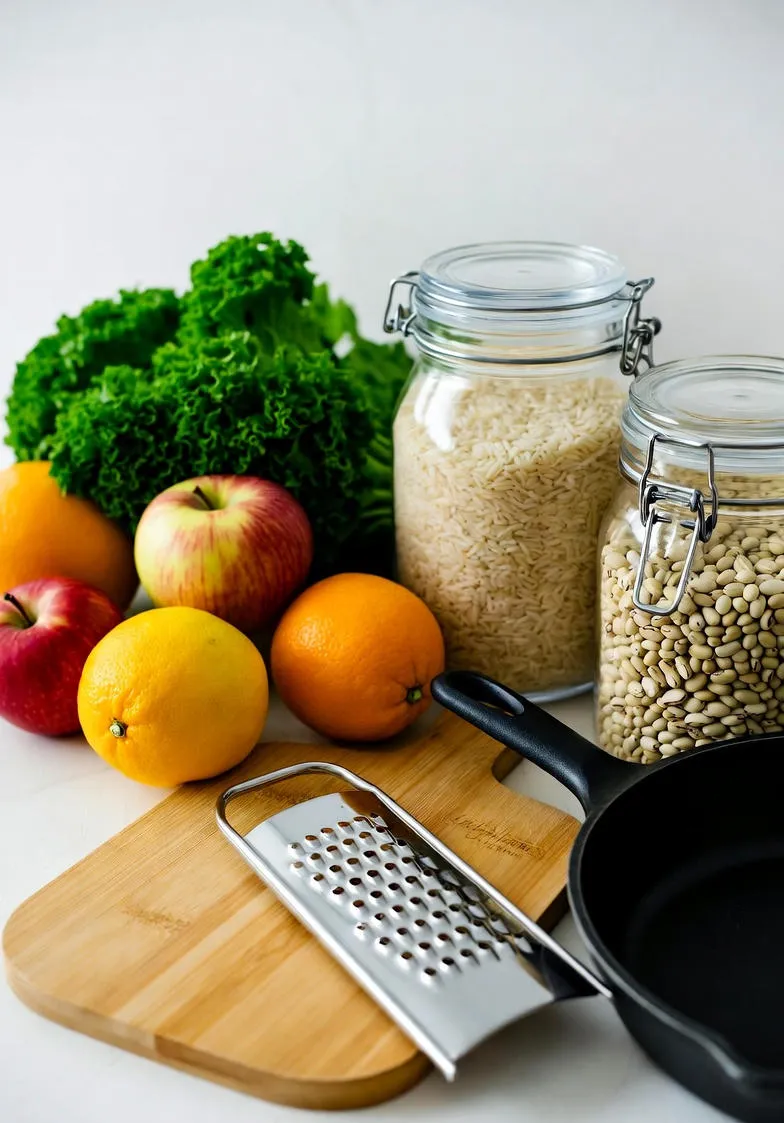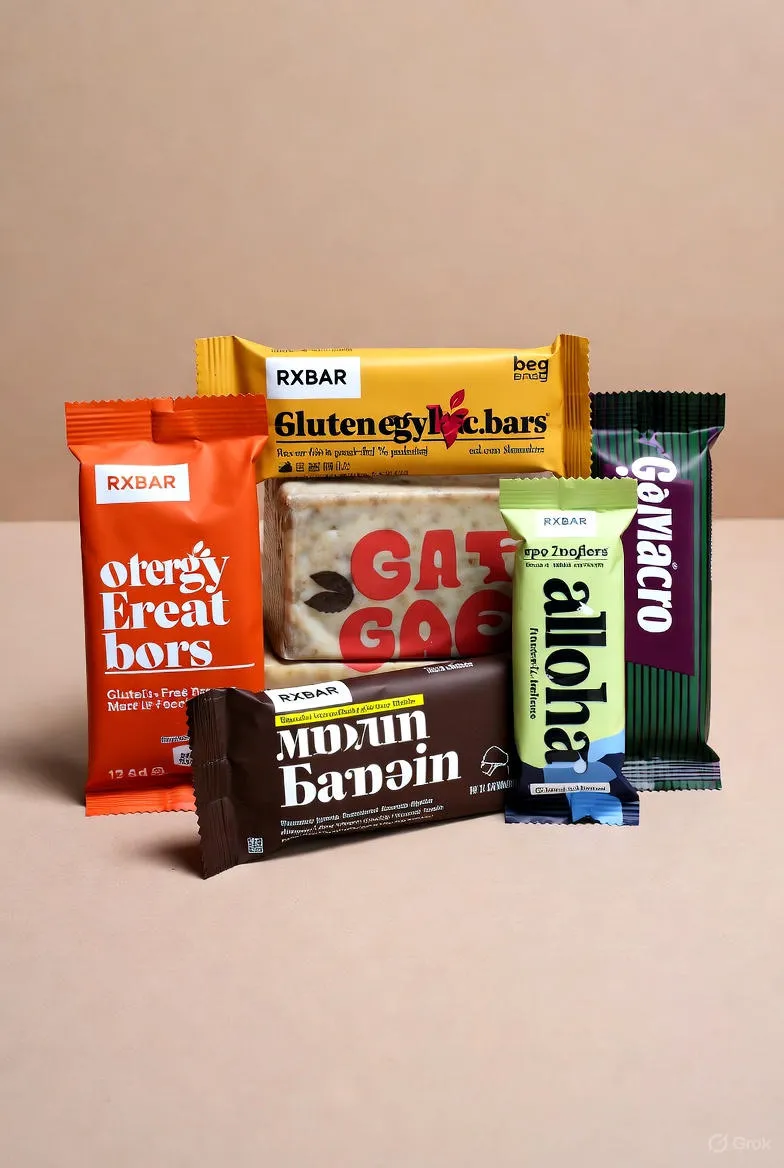Smart Budgeting on a Gluten-Free Diet: Essential Tips to Save Money Without Sacrificing Health
Discover practical tips for managing a gluten-free diet on a budget. Learn meal planning, smart shopping, and DIY recipes to save money while staying healthy and satisfied.

Introduction to Gluten-Free Living on a Budget
Adopting a gluten-free lifestyle can be a game-changer for those with celiac disease, gluten sensitivity, or anyone simply choosing to eat healthier. However, the transition often comes with a sticker shock at the grocery store. Gluten-free products frequently cost more than their wheat-based counterparts, leading many to wonder how to maintain this diet without breaking the bank. The good news is that with strategic planning and smart choices, you can manage a gluten-free budget effectively. This article dives deep into practical tips, from meal planning to savvy shopping, ensuring you nourish your body affordably.
Understanding the financial challenges is the first step. Gluten-free flours, breads, and pastas can be up to twice as expensive due to specialized production processes. But by focusing on whole, naturally gluten-free foods like rice, quinoa, fruits, vegetables, and lean proteins, you can slash costs significantly. Let's explore how to build a sustainable, wallet-friendly approach to gluten-free eating.
Why Gluten-Free Eating Feels Pricey and How to Counter It
The premium pricing on labeled gluten-free items stems from smaller market demand and rigorous contamination controls. Yet, not everything needs a 'gluten-free' label to be safe. Many staples like corn, potatoes, and nuts are inherently gluten-free, offering nutrient-dense options at standard prices. To counter the expense:
- Prioritize Perimeter Shopping: Stick to the outer aisles of the supermarket where fresh produce, meats, and dairy reside. These items are rarely gluten-laden and cost less per serving than processed alternatives.
- Read Labels Wisely: Avoid impulse buys on packaged goods. Check for hidden gluten in sauces or seasonings, but opt for bulk buys of verified safe items to reduce per-unit costs.
- Embrace Seasonal Eating: In-season fruits and veggies are cheaper and fresher, providing variety without extra spend.
By shifting your focus from convenience to basics, you'll find that a gluten-free pantry doesn't have to be extravagant.
Mastering Meal Planning for Cost Efficiency
Meal planning is your secret weapon against overspending. Without a roadmap, it's easy to order takeout or grab pricey snacks. Start by mapping out a weekly menu that balances nutrition and affordability.
Step-by-Step Meal Planning Guide
- Assess Your Needs: Inventory your kitchen staples. What gluten-free grains do you have? How many servings of protein per day?
- Theme Your Weeks: Designate 'Meatless Monday' with bean-based dishes or 'Taco Tuesday' using corn tortillas—both budget-friendly themes.
- Batch Cook: Prepare large quantities of versatile bases like quinoa salad or roasted veggies to mix and match throughout the week.
- Portion Control: Use apps or journals to track portions, preventing waste and ensuring balanced meals.
A sample weekly plan might include breakfast smoothies with frozen berries and almond milk, lunches of chickpea salads, and dinners like stir-fried rice with tofu. This structure not only saves money but also reduces decision fatigue.
Smart Shopping Strategies for Gluten-Free Shoppers
Grocery shopping can make or break your budget. Approach it like a mission: armed with a list, coupons, and knowledge of store layouts.
Finding Deals and Discounts
Discounts abound if you know where to look. Many stores offer loyalty programs with digital coupons tailored to dietary needs. Sign up for newsletters from brands like Bob's Red Mill or Enjoy Life for exclusive gluten-free offers.
- Bulk Buying: Purchase non-perishables like gluten-free oats or nuts in bulk from warehouse clubs. Divide into portions to extend shelf life.
- Store Brands vs. Name Brands: Generic gluten-free options are often 20-30% cheaper and comparable in quality.
- Farmers' Markets: For fresh produce, these can undercut supermarket prices, especially toward closing time when vendors discount unsold goods.
- Online Shopping: Platforms like Thrive Market or Amazon Subscribe & Save provide competitive pricing on gluten-free essentials with delivery convenience.
Pro tip: Shop mid-week when shelves are restocked but crowds are thinner, allowing time to hunt bargains.
DIY Kitchen Hacks: Homemade Gluten-Free Staples
One of the biggest savings comes from making your own basics. Store-bought gluten-free bread can cost $6-8 per loaf, but a homemade version using simple ingredients runs under $2.
Easy Recipes to Try
Gluten-Free Flour Blend: Mix 2 cups brown rice flour, 2/3 cup potato starch, 1/3 cup tapioca starch, and 1 tsp xanthan gum. This yields multiple batches for pancakes, cookies, or breadings.
Budget Bread Recipe: Combine 3 cups flour blend, 1 packet yeast, 1 tsp salt, 1 tbsp honey, 1 cup warm water, and 2 tbsp oil. Let rise, bake at 375°F for 40 minutes. Slice and freeze for freshness.
Snack Mix: Toss popcorn, roasted chickpeas, and dried fruit— a satisfying, cheap alternative to pricey bars.
Investing time upfront pays dividends. These hacks not only cut costs but empower you to control ingredients, enhancing flavor and nutrition.
Navigating Eating Out and Social Gatherings Affordably
Social life doesn't have to derail your budget. Eating out gluten-free often means higher tabs due to limited menus, but preparation helps.
- Research Ahead: Use apps like Find Me Gluten Free to locate budget-friendly spots with dedicated kitchens.
- BYO Sides: For potlucks, bring a large gluten-free dish to share, ensuring you have safe options without excess spending.
- Happy Hour Hacks: Opt for places with affordable appetizers that are naturally gluten-free, like veggie platters or grilled meats.
Communicate needs clearly with servers to avoid cross-contamination fees. Over time, you'll build a repertoire of go-to affordable eateries.
Long-Term Savings: Building a Gluten-Free Pantry on a Dime
Sustainability means stocking smartly. Rotate your pantry to use items before they expire, and gradually build reserves during sales.
Essential Pantry Items Under $5 Each
| Item | Why It's Essential | Average Cost |
|---|---|---|
| Rice | Versatile base for meals | $2/lb |
| Canned Beans | Protein powerhouse | $1/can |
| Frozen Veggies | Nutrient-dense, no waste | $1.50/bag |
| Nut Butters | Quick energy boost | $3/jar |
| Herbs & Spices | Flavor without calories | $2/bottle |
This core list forms the foundation for countless meals. Supplement with sales on proteins like eggs or chicken for complete nutrition.
Overcoming Common Budget Pitfalls
Even savvy shoppers slip up. Watch for these traps:
- Over-Reliance on Substitutes: Don't replace every wheat item; innovate with new recipes instead.
- Ignoring Waste: Freeze extras promptly to stretch dollars further.
- Forgetting Self-Care: Budget for occasional treats to avoid burnout— a small indulgence sustains motivation.
Track expenses monthly with free apps like Mint to spot patterns and adjust.
Sample 7-Day Budget Meal Plan Under $50
To illustrate, here's a realistic plan for one person, assuming basic staples on hand.
- Day 1: Breakfast: Oatmeal with banana ($0.50). Lunch: Lentil soup ($1). Dinner: Veggie stir-fry with rice ($2).
- Day 2: Breakfast: Smoothie ($0.75). Lunch: Chickpea salad ($1.50). Dinner: Baked potato with beans ($1.25).
- Day 3: Breakfast: Eggs and spinach ($1). Lunch: Quinoa bowl ($1.75). Dinner: Corn tortillas with salsa ($1.50).
- Day 4: Breakfast: Yogurt parfait ($0.80). Lunch: Leftover stir-fry ($0). Dinner: Grilled chicken salad ($3).
- Day 5: Breakfast: Fruit and nuts ($0.60). Lunch: Bean wrap ($1.20). Dinner: Sweet potato fries with dip ($1.80).
- Day 6: Breakfast: Pancakes from mix ($0.90). Lunch: Veggie soup ($1). Dinner: Tofu scramble ($2.25).
- Day 7: Breakfast: Avocado toast on GF bread ($1.50). Lunch: Rice salad ($1.40). Dinner: Zucchini noodles with pesto ($2).
Total: Approximately $45, leaving room for snacks or adjustments. Scale up for families by doubling portions efficiently.
Conclusion: Thriving Gluten-Free Without the Financial Strain
Managing a gluten-free budget is about creativity, foresight, and a dash of patience. By embracing whole foods, planning meticulously, and leveraging deals, you transform potential expense into an opportunity for healthier, more intentional eating. Remember, the goal isn't deprivation but empowerment—fueling your body with joy and affordability. Start small: pick one tip today, like crafting a shopping list, and build from there. Your wallet and well-being will thank you.
(Word count: 1,248)


